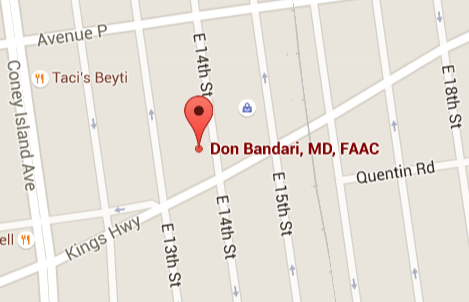Varicose Veins

Veins are the vessels that return blood to the heart once it has circulated through the body (as opposed to arteries, which carry oxygen-rich blood from the heart to the body). They have one-way valves that help keep blood flowing in the proper direction. If these valves stop functioning the way they are supposed to, blood can flow backwards and pool in the vein, causing it to stretch.
Varicose veins are swollen, dark blue or purple blood vessels that you can see and feel beneath the skin. They often look like twisted cords, and usually appear on the calves, inside of the legs, and ankles. Varicose veins form when the valves within a vein weaken and allow some blood to flow backward. The vein weakens under the additional strain and balloons outward, raising the skin surface.
Patients with varicose veins do not usually experience any pain from this condition, although some may develop aching, throbbing, cramping and other symptoms that may indicate a need for medical attention.
Causes and Risks Factors of Varicose Veins
While varicose veins can affect nearly anyone, they tend to occur more often in patients possessing certain risk factors, including:
- Older age
- Family history of varicose veins
- Pregnancy
- Obesity
- Lack of physical activity
- Excessive sun exposure
Varicose veins occur more commonly in men than in women, and the risk tends to increase with age. While not usually of medical concern, many patients with varicose veins are bothered by their appearance and seek treatment.
Diagnosing Varicose Veins
Dr. Don Bandari can easily diagnose varicose veins after a physical examination of the affected area. Additional testing may also be performed, such as an ultrasound to evaluate the structure and blood flow within the veins.
Treatment of Varicose Veins
Many people with venous disease seek cosmetic treatment to reduce the appearance of varicose or spider veins on the legs. Treatment often relieves minor discomfort associated with the condition such as swelling, fatigue, itching and cramps. Sometimes, however, more significant problems can develop if veins are left untreated. Clogging of the blood in the veins can result in the formation of a clot that blocks blood flow or breaks free and travels to the heart or lungs, causing severe damage and even death.
There are several treatment options available to eliminate or reduce the appearance of veins and relieve any symptoms, and may include self-care methods such as losing weight, keeping the legs elevated and wearing compression stockings.
For veins that do not respond to these remedies, more advanced treatments may be required:
Sclerotherapy treats varicose veins by injecting a solution into the targeted veins that causes them to gradually disappear. The sclerosing solution used during this procedure irritates the vein lining and turns it into scar tissue that eventually fades away. In most cases, desired results are achieved after two to four treatment sessions.<\p>
Endovenous laser therapy (EVLT) is a minimally invasive procedure that treats varicose veins faster, safer and more effectively than other procedures, as it precisely targets the affected veins with a laser probe under ultrasound guidance. The laser energy delivered to the vein damages the vein walls and shrinks the vessel so that blood can no longer flow through and is diverted to healthy veins.
Preventing Varicose Veins
While there is no surefire way to prevent varicose veins from developing, there are certain life changes that can be made in order to reduce your risk of developing this condition. This may include:
- Exercising regularly
- Maintaining a healthy weight
- Eating a diet high in fiber and low in salt
- Elevating the legs
- Avoiding sitting or standing in one position for too long
Your doctor will provide you with more information as to how you can reduce your risk of varicose veins and maintain strong vascular health.
